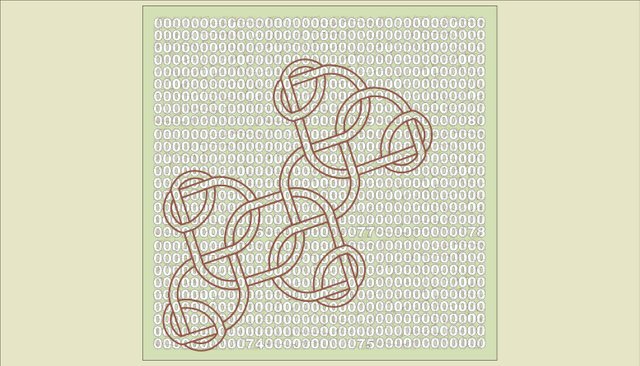The earliest code for creating the skin of the Graphic User interface (GUI) for Internet web pages brought a revelation in its standard page programmability. The “background” let a tiled element, usually a field of color, fill the screen. I immediately tested the geometry of my grid as this tile and created my first real example of an allusion to infinite expansion.
This was made in Netscape and used as a cheap thrill that could be opened in any computer in the mid 1990's from just a floppy disk with a 5K gif image and a frame filled with a hundred periods with carriage returns that made it possible to seemingly scroll down a screen filled with my grid, forever.
This same tiling today reflects a vector future in the http://www.greatknot.com white paper web site. All its backgrounds are “drawn” from SVG code that has a repeat command built into it. This continues the magical sense of expansion on touch screens where the grid can be reduced to a texture or enlarged to microscopic examination with no loss of edge quality.
This growth in the capabilities of a GUI carries a philosophical message about inflation and deflation and the hold they have on any system about values and transparency.

That will be an issue once the five three crossing knots added to a combination of three four crossing knots, illustrated here, moves on to the next logical set of combinations. This grid of nine modules, seven of which identify this unique knot with their value as modules 74, 75, 76, 77, 78, 79 and 80 in the Cryptoknot protocol will lead to the first imposed limitation in the system. In this case, these tokenized numbers here will never be associated with any other entity but the immutable combination that caps off the joining of three four crossing knots with five three crossing knots.
Authors get paid when people like you upvote their post.
If you enjoyed what you read here, create your account today and start earning FREE STEEM!
If you enjoyed what you read here, create your account today and start earning FREE STEEM!